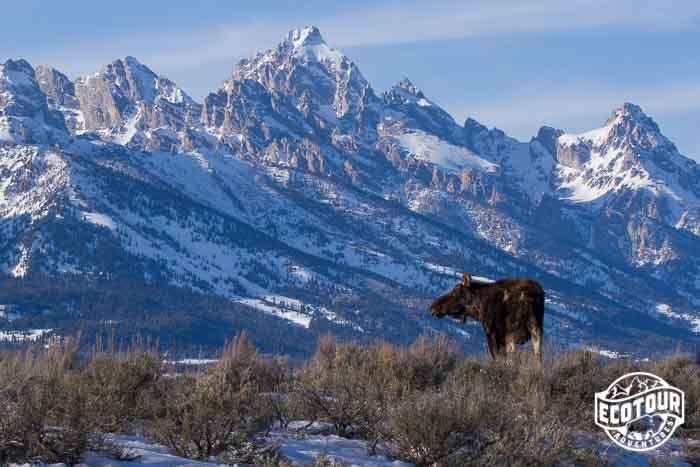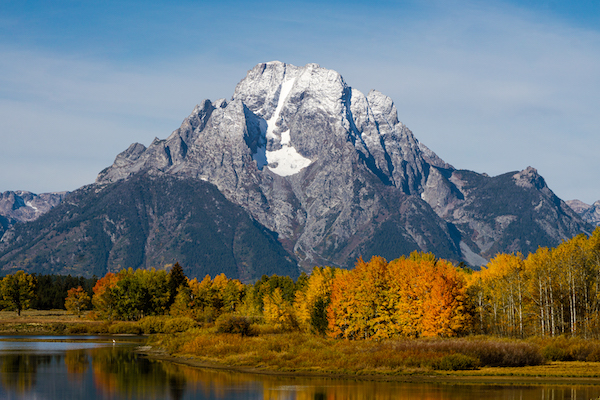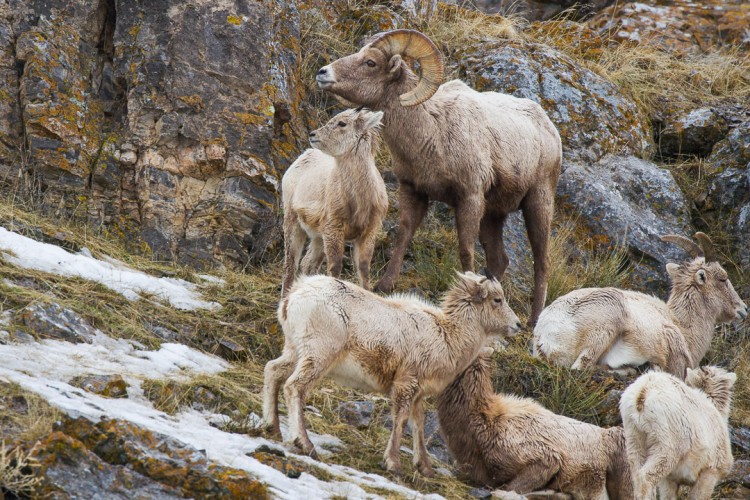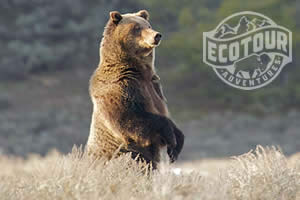Bighorn sheep are an iconic mountain species. Here in Jackson Hole, the best time to see these magnificent animals is in the winter, when they migrate from higher elevations onto the floor of the National Elk Refuge. Visitors delight in watching them walking down the Refuge road, sometimes even walking right up to vehicles.
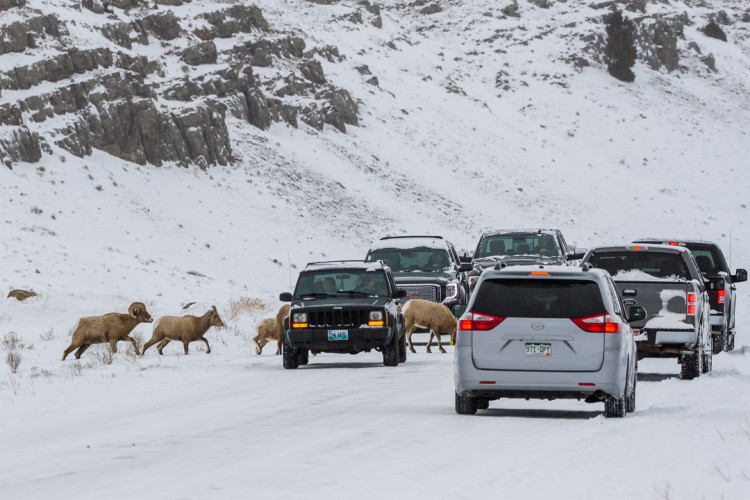
Photo by Josh Metten.
If you’ve witnessed this for yourself, you’ve likely also seen the large digital signs adjacent to the Refuge road informing visitors to not let the sheep lick salt from their cars. These signs serve two purposes: to keep traffic flowing smoothly and to keep the sheep safe.
Bighorn sheep are highly susceptible to pneumonia, which has the ability to decimate whole herds and can be transmitted through saliva. Although the origins of pneumonia in bighorn populations are still debated, it is widely believed that the disease was first transmitted from domestic sheep. Historically, Jackson Hole has been the land of cattle ranches since the mid-1800s, domestic sheep ranches existed in surrounding areas such as Star Valley, Teton Basin, and Green River country and likely introduced pneumonia into the bighorn sheep populations.
Pneumonia is the cause of massive die-offs of bighorn sheep populations and is the subject of extensive research across the west, including Jackson Hole. The larger a population gets, the more concerned biologists get about a disease outbreak. Each winter, biologists with the Wyoming Game & Fish Department (WYGFD) conduct bighorn sheep population counts in the Gros Ventre range just east of Jackson. Numbers from the past few years have raised alarms.
In 2021 biologists counted 491 sheep; in 2022 they counted 505. These numbers have not been seen since 2001, after which nearly 70% of the herd was killed due to a pneumonia outbreak. Recent summers have seen radio-collared lambs (part of an ongoing nutritional study) die of pneumonia. These lambs had lower body weights, a sign of poorer nutrition. Researchers are interested in studying the interactions between nutrition–basically, how fat and happy are the sheep?–and disease outbreaks. As bighorn populations increase, so does competition for food, which leads to reduced fat stores among individual animals. With more sheep having less fat on their bodies, they could be more susceptible to falling victim to pneumonia. The question biologists are trying to answer is: could nutrition be the cause of huge disease-related population die-offs?
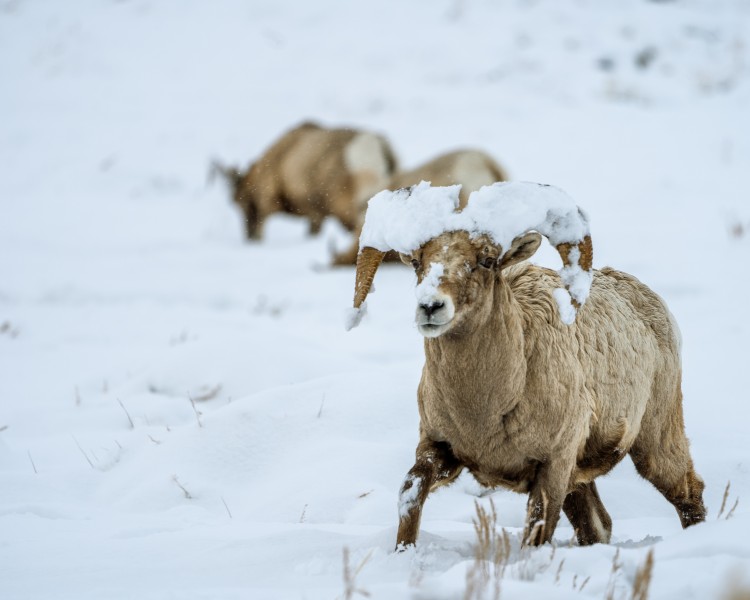
Photo by ETA Naturalist Kelsey Wellington.
Research to answer this question has been conducted since 2015, and findings thus far suggest that good fat stores might not drastically improve a sheep’s chance of keeping pneumonia at bay, but it could improve chances of surviving the disease. A pneumonia infection can consume as much fat from a sheep’s body as rearing a lamb does, so higher fat stores could certainly increase chances of survival.
To improve population-level nutrition, WYGFD biologists authorized 16 hunting tags for ewes in the Gros Ventre range last fall. In reducing the herd to below 500 animals, they hope to see an increase in fat stores and–fingers crossed–avoid a potential die-off. Only seven of those 16 tags were successfully utilized, however, making only a small dent in the population. WYGFD may increase tag numbers further this coming fall, pending results from this February’s sheep count.
The goal is to steadily bring down the population over the years, first to below 500 animals, and eventually to around 400, all with the goal of improving overall herd health. Only time and continued research will tell how the Gros Ventre bighorn sheep will fare. While we wait, wildlife watchers are encouraged to report signs of sick sheep to the Jackson office of WYGFD. If you see runny noses or coughing among the bighorn sheep in the Elk Refuge or the Gros Ventre range, please call Aly Courtemanch, the Jackson-area wildlife biologist studying these animals, at (307) 733-2321.
To read more about this issue, head over to the Jackson Hole News & Guide.


